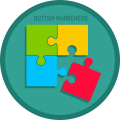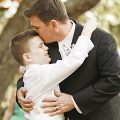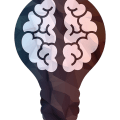In this article, you’ll learn Autism signs and symptoms to look out for. Research has shown that the signs and symptoms of autism are present from a young age, and recognition of these signs and early intervention can result in the best outcomes for children with ASD.
The following are “red flags” that are possible indications of ASD. Should your child show any of the following signs and symptoms, it is highly recommended that you go to a medical specialist for a diagnostic testing.
Keep in mind that the presence of a few symptoms does not necessarily mean that your child has autism. There must be multiple symptoms that disrupt a person’s ability to communicate, form relationships, explore, play, and learn.
Watch Out For These Autism Signs and Symptoms
- No babbling by 12 months
- Delayed speech and language skills
- The person can’t do a back-and-forth gestures. This include pointing, showing, reaching, or waving by 12 months
- No big smiles or other warm, joyful expressions by six months or thereafter. There is a flat or inappropriate facial expressions
- No back-and-forth sharing of sounds, smiles or other facial expressions by nine months
- No meaningful, two-word phrases (not including imitating or repeating) by 24 months
- Any loss of speech, babbling, or social skills at any age
- The absence or inconsistent response to the sound of his/her name being called
- “Stimming” behaviors such as flapping, rocking, spinning, head banging, squealing, spinning in circles, constantly feeling textures, or repeating words and phrases
- Inconsistent use of eye contact, gestures (e.g., pointing or shaking one’s head), and facial expressions to convey needs and desires
- A showing of limited interest by the child in watching or playing with other children
- Unusual reactions to the sound, smell, taste, look, or feel of things
- Obsessive interests
- Giving unrelated answers to questions, or repeating words and phrases over and over again (echolalia)
- Avoiding eye contact and wanting to be alone
- Difficulty talking about their own feelings, or difficulty understanding other people’s feelings
- Becoming upset by minor and major changes
- Interacts with others only to achieve a desired goal
- Does not understand personal and space boundaries, and avoids or resists physical contact
- Does not understand jokes, sarcasm, or teasing, and talks in a flat, robot-like or sing-song voice
- Hyperactivity and impulsivity
- Short attention span
- Temper tantrums, aggression, or causing self-injury
- Lack of, or more, fear than expected
- Unusual eating or sleeping habits
Autism Signs: Keep in Mind
The symptoms of ASD can manifest at any age, despite being a lifelong disorder that starts in early childhood. The fact of it is that some people simply will not manifest any symptoms until later in life, or until after particularly stressful or traumatic life experiences.
Appearance-wise, there is really nothing that will set individuals with ASD apart from others who do not have the condition. The only differences are behavioral – and these symptoms can range from very mild to very severe.






 I love to write medical education books. My books are written for everyone in an easy to read and understandable style.
I love to write medical education books. My books are written for everyone in an easy to read and understandable style.